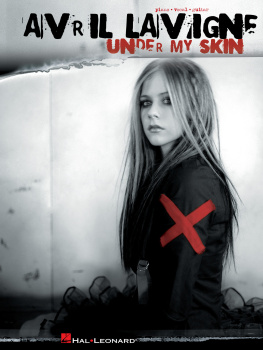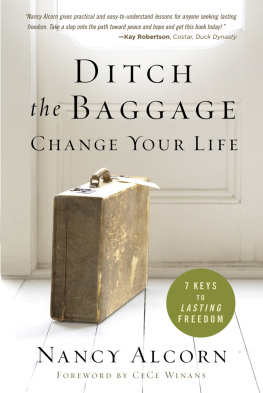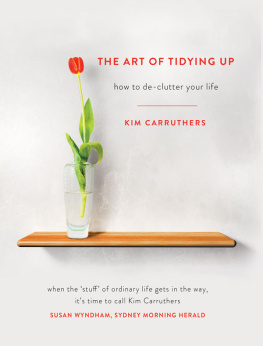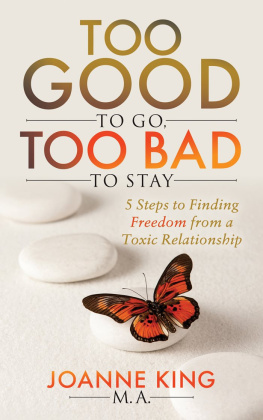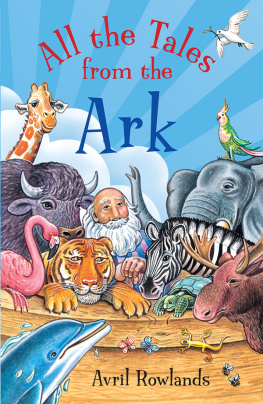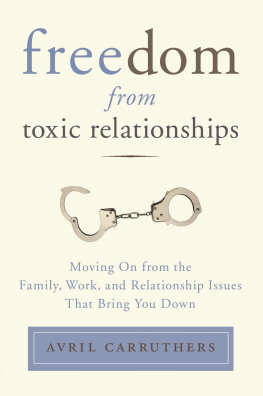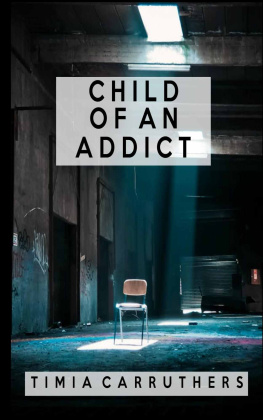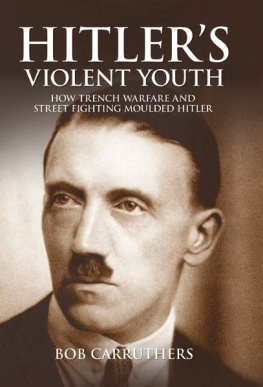Let
your past
GO and
LIVE
Avril Carruthers
Let
your past
GO and
LIVE
Freedom from
family, relationship
and work baggage

First published in 2008
Copyright Avril Carruthers 2008
All rights reserved. No part of this book may be reproduced or transmitted in any form or by any means, electronic or mechanical, including photocopying, recording or by any information storage and retrieval system, without prior permission in writing from the publisher. The Australian Copyright Act 1968 (the Act) allows a maximum of one chapter or 10 per cent of this book, whichever is the greater, to be photocopied by any educational institution for its educational purposes provided that the educational institution (or body that administers it) has given a remuneration notice to Copyright Agency Limited (CAL) under the Act.
Inspired Living, an imprint of
Allen & Unwin
83 Alexander Street
Crows Nest NSW 2065
Australia
Phone: (61 2) 8425 0100
Fax: (61 2) 9906 2218
Email: info@allenandunwin.com
Web: www.allenandunwin.com
National Library of Australia
Cataloguing-in-Publication entry:
Carruthers, Avril.
Let your past go and live : freedom from family, relationship and work baggage / Avril Carruthers.
ISBN: 9781741755206 (pbk.)
Includes index.
Bibliography.
Self-actualization (Psychology)
Self-realization.
Self-acceptance.
Interpersonal relations.
158.1
Internal design by fisheye design
Set in 10.5/14 pt Minion by Midland Typesetters, Australia
Printed and bound in Australia by Griffin Press
10 9 8 7 6 5 4 3 2 1
Contents
Acknowledgments
My profound thanks for all I have received from my teachers, some of whom Ive known in the flesh and others whom I have only known through their writings and correspondence.
Dr Samuel Sagan, and the good people of the Clairvision School, Sydney; Dr David Schnarch; Dr Eric Berne; Dr Thomas Harris; Dr Stephen B. Karpman; Elana Leigh; Jan Grant; Eric Lyleson; Lao-Tzu.
Dianne Blayney, Posie Graeme-Evans, Isolde Martyn, Peter ODonnell and Nicola Tomlin, all of whom helped in so many ways with feedback and suggestions.
Maggie Hamilton at Allen & Unwin for her constant encouragement and advice; my brilliant editor and copyeditor Clara Finlay and Katri Hilden; Clare Emery for proofreading; and Kathy Mossop who made everything so much easier.
My extraordinary clients, students and supervisees and all those who attended my workshops, always my teachers.
To my ever-supportive family, my undying appreciation.
Self is everywhere, shining forth from all beings,
vaster than the vast, subtler than the most subtle,
unreachable, yet nearer than breath, than heartbeat.
Eye cannot see it, ear cannot hear it nor tongue
utter it; only in deep absorption can the mind,
grown pure and silent, merge with the formless truth.
As soon as you find it, you are free; you have found yourself;
you have solved the great riddle; your heart forever is at peace.
Whole, you enter the Whole. Your personal self
returns to its radiant, intimate, deathless source.
Mundaka Upanishad
(c. 8th5th century BCE)
Introduction
If our past shapes us, is it permanent? Can we ever become free of it?
Few of us are not limited in some way by events in our past, and while our parents are frequently (and often unfairly) blamed for our deficiencies, none of us is perfect and it is not only our parents who have determined who we are.
There are parts of our lives with which we might be less than satisfied. We might wish we were more effective or successful or that our relationships were more fulfilling. But often it is not just a matter of being more effective or more successful in our lives, or about being loved or loving in the way we wish. Often it is a feeling that we are not in control of our lives, or not expressing ourselves as we truly are. We find ourselves acting in ways that we would rather not. We may feel the real us hasnt yet come out, or that parts of us are frozen or undeveloped. Or perhaps we really dont know who we are and we hope we are not who we seem to be, or who people seem to think we are.
To find out who we are, its easier to start with who we are not. In working out how we can become more authentic it helps to have a structured approach. As a transpersonal psychotherapist I work with people who want not only to find effective approaches to personal problems, but also to explore possibilities, to grow as human beings to where life is exciting, challenging and fun. At a certain stage there is a spiritual element that goes beyond the physical and material to a sense of something far greater than ourselves.
We have the ability to connect to this greater something in our daily interactions. I work holistically, as an energetic healer where needed, as well as in more conventional modes of talk therapy. I use subtle vision and facilitate in clients altered states of awareness that can reveal the source of a problem and defuse it, enabling lasting change. Often sessions are deeply meditative in nature. The aim is to connect people to more meaningful experiences of themselves, to increase spiritual consciousness and personal freedom. As a result this book deals with deep states of awareness as well as Aha! moments that can liberate us from identifying with our limitations. This book represents the major part of my work with clients and students specifically on Characters.
Characters are sub-personalities that are conditioned into us and which we hide behindand which often take over at the most inappropriate times. Characters show us different aspectsfragmented reflectionsof ourselves, like a mosaic made of fragments of mirror. One aim of working with Characters is that eventually we see ourselves truly, no longer fractured or distorted, but whole and a pleasure to see. Working with Characters is life-changing.
Many of the explorations in this book come directly from workshops and sessions with clients, or from my own life and observations. Those clients whose stories are partly reproduced here have graciously agreed to their inclusion. I am grateful for their generosity and honesty, and for sharing their explorations in the service of a better understanding of Characters. I hope you will find the Character capsules and commentaries as fascinating as we have, and that you are able to make this approach to self-realisation useful.
In this book I have used a capital letter to differentiate what I mean by Character, from character in the more usual sense as a persons distinguishing qualities or moral constitution. I also commonly refer to a Characters emotion with a capital letter to differentiate it from a more transient emotion. So, an Angry Character is different to a person who may occasionally get angry at something, but is not chronically angry at everything in his life. A Sad or Grief-struck Character is sad about everything, not just an event or situation that warrants it on occasion. When talking about Professional Characters, I am referring to a set of formulaic behaviours adopted by some people in the pursuit of their professions: for example, the Doctor Character, Accountant or Teacher. And to avoid the clumsiness of he or she I have alternated between using both genders.
The many stories in these pages are not intended to be clinical case studies, but rather capsules designed to exemplify points for Character differentiation or identification. While each Character is based on a number of different people, none is intended to identify a specific, living person; rather I have sought to depict a Character in its most typical form, and aimed for emotional truth rather than biographical facts. It is not intended that Characters are identified with either gender where a Character is not gender-specific. In general, a Character is not the whole person. It is a construct and not quite authentic.
Next page

